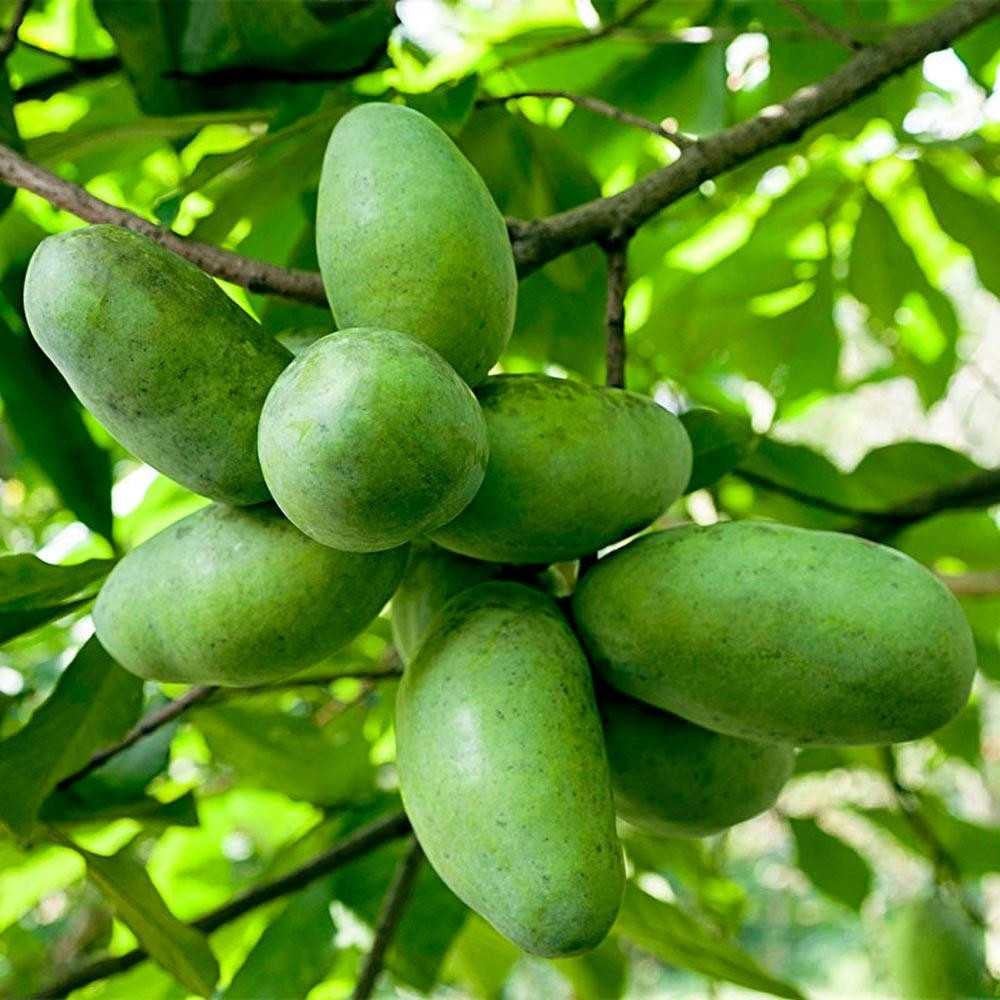
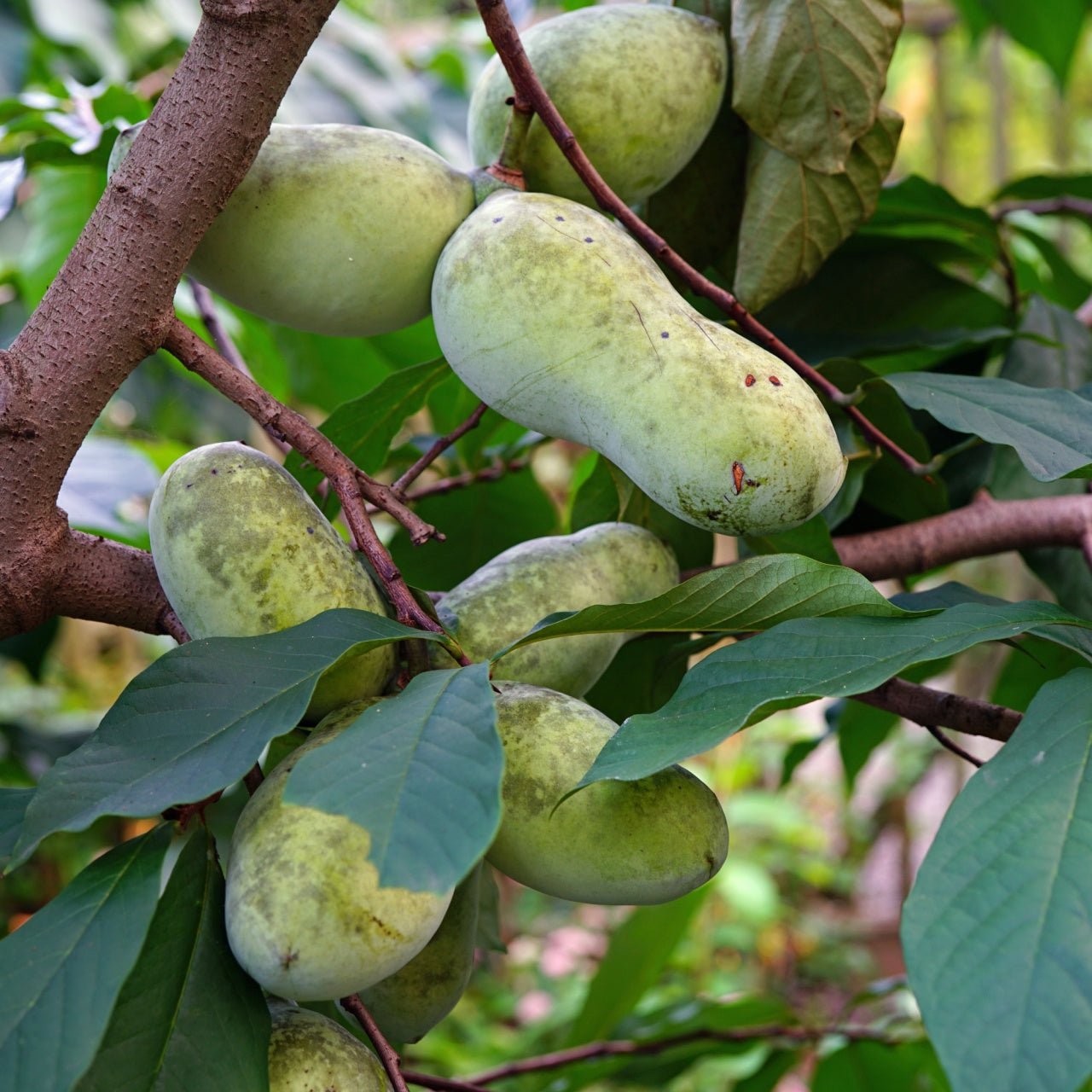
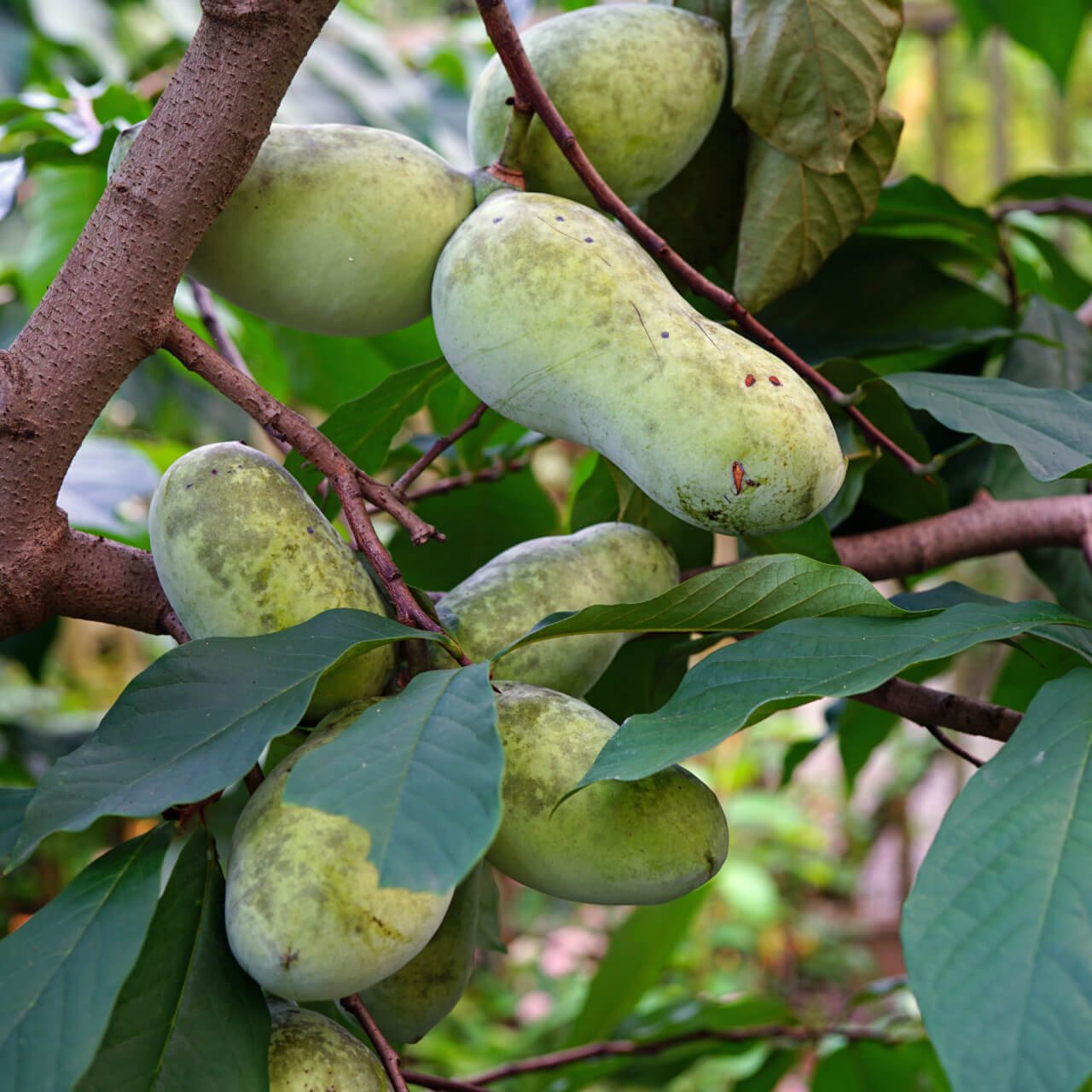
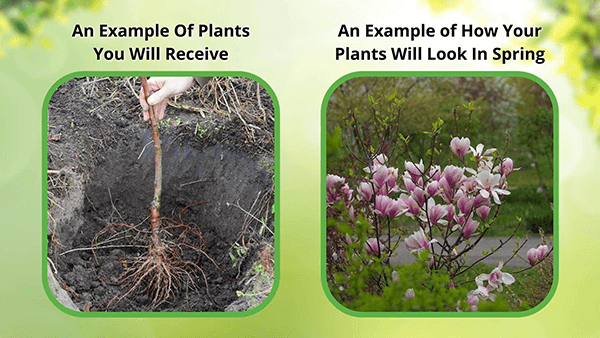
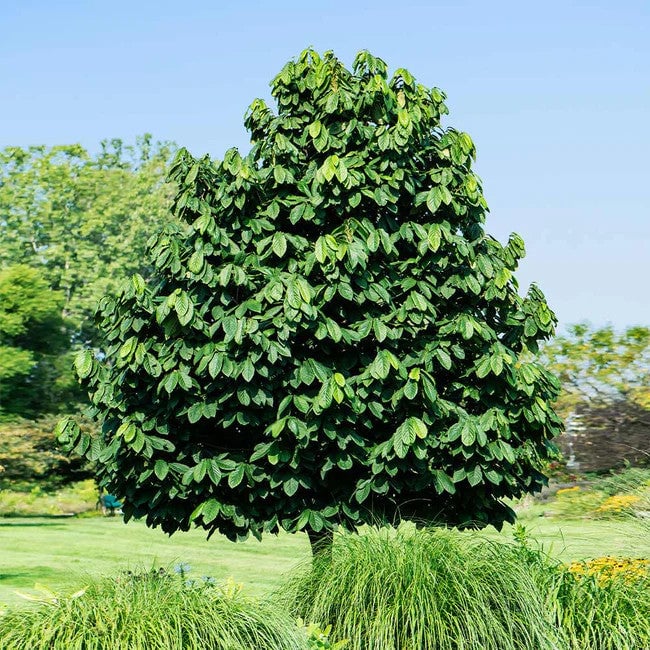

Paw Paw Tree
Supports local wildlife and pollinators
Beautiful foliage with seasonal interest
Grows well in shaded areas
Thrives in
ZONE 5ZONE 6ZONE 7ZONE 8This plant ships:
Ships Fall 20251 Year Guarantee on all plants
Paw Paw Tree - Asimina triloba
Paw Paw Tree (Asimina triloba) is the native fruit tree you never knew existed and you will get to reap the benefits of growing it with your family’s future generations! Delicious and creamy tropical tasting fruits load these branches, reminiscent of sweet mango and banana flavors.
Plant Details - Paw Paw Tree
Family: Annonaceae
Light Requirement: Partial Shade
Water Needs: Moist
Height: 15 – 30 ft.
Spread: 12 – 15 ft.
Growth Rate: Slow
Bloom Time: Spring
Flower Color: Red
Wildlife Value: Attracts butterflies, flies
Landscape Uses and Maintenance – Paw Paw Tree
The Paw Paw Tree is a deciduous tree that is native to forests located in Eastern and Southern America. It is an understory tree that has great wildlife value.
This plant has deep burgundy, almost purple flowers that hang downwards like bells. It has wide green leaves and fruits.
Fruit size varies. Many animals will enjoy the fruits if you do not harvest in a timely manner, including squirrels and bear. Protect fruits that are nearly ripe with cloth or mesh bags while they are still on the tree.
These trees can benefit from shade when they are first planted, so plant in a shady area. It will tolerate partial to full sun as it matures.
Plant it in well draining, fertile soil. Make sure this tree has moist soil, especially in the hot summer months when it may need more watering. Avoid planting in heavy clay soils.
You can fertilize them in spring with a balanced nitrogen, phosphorous, and potassium fertilizer.
Deer resistant.
Noteworthy Characteristics
Paw Paw Tree seeds are large, brown, and oblong. They are large – eat around them or spit out the seeds! To propagate the seeds, make sure to give a cold period and then plant to mimic their natural life cycle.
This plant is the only host plant to the Zebra Swallowtail caterpillar, making this a truly special tree indeed. Plant it to help increase the population of this butterfly.
Make sure to buy two plants if you want the fruits. You will not get any fruit set without two trees, as the flowers must cross pollinate.
This Is How Your Plants Will Look upon Delivery

Bloom Season
Spring
Bloom/Foliage Color
Purple
Height at Maturity
Under 25 Feet
Care
Pawpaw trees thrive in well-drained, rich soil. Water regularly, particularly during dry periods, and mulch to retain moisture. Prune in late winter to shape and release any dead wood. Protect from pests and diseases to ensure healthy fruit development.
Plant Reproduction
Paw Paw Tree spreads through root suckers and seed dispersal.
Plant fruit trees in early spring or late fall when the weather is cool. Choose a sunny location with well-drained soil. Dig a hole twice the width of the roots and double as deep as the root system. When the tree is put in the hole, make sure the graft union (a noticeable bump where the tree was grafted above the rootstock) is above the soil line. Put dug-out soil around the tree roots, gently firmly remove air pockets, and water thoroughly.
Water young trees regularly, especially during dry spells, to establish a robust root system. Once established, water deeply and less frequently. Prune fruit trees yearly during the dormant season to remove dead or diseased wood, improve air circulation, and shape the tree for optimal fruit production. Fertilize in early spring and thin the fruit when necessary to prevent overbearing, which can stress the tree and reduce fruit quality.
Shipping date depends on the date displayed and chosen when you order from the product's page.
We only accept returns on plants verified dead. If you think your plants have died, we offer a 1 year warranty, please use this File a Claim Link to verify dead plants and start with return warranty process.







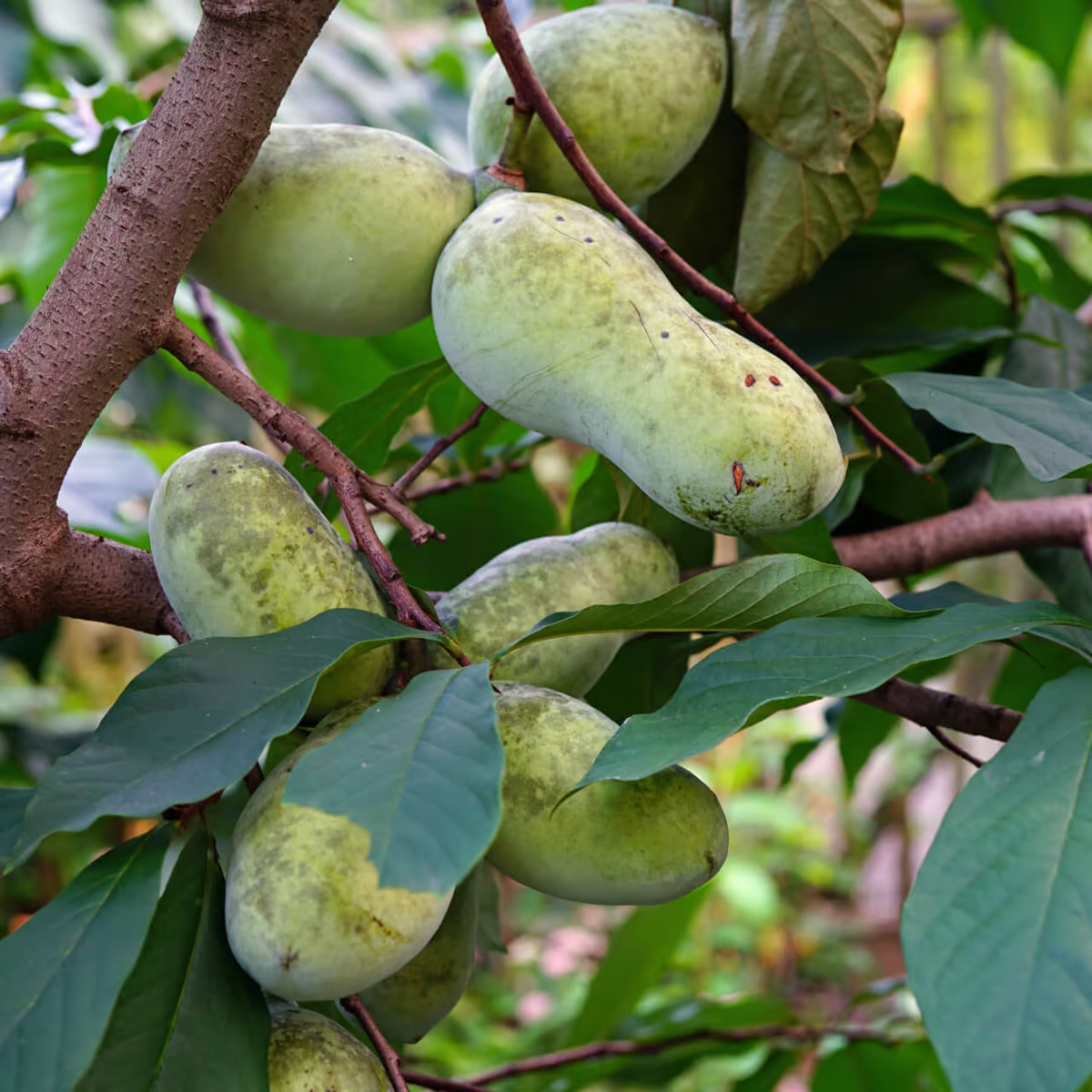
Delicious Tropical Fruit:
The Pawpaw Tree produces unique fruits colors can include subtle variations of yellow, brown, orange, and green, adding many stunning features to the plant.
Nutrient-Rich Fruit:
Pawpaw fruits are rich in vitamins and antioxidants, offering a healthy addition to your diet.
Lush Foliage:
Its large, tropical-looking leaves add an exotic touch to any landscape.
Native Plant:
As a North American native, the Pawpaw Tree supports local wildlife and promotes ecological balance.
Caring Tips
How do I care for my Paw Paw Tree?
Each box contains detailed care instructions and information about your product. But here's the basics.
Care Tips
Pawpaw trees thrive in well-drained, rich soil. Water regularly, particularly during dry periods, and mulch to retain moisture. Prune in late winter to shape and release any dead wood. Protect from pests and diseases to ensure healthy fruit development.
Light Requirements
Pawpaw trees flourish in complete sun to partial shade. Ideally, they should receive 4-6 hours of direct sunlight daily, but they can also grow well in dappled shade, especially in hotter climates where some afternoon shade helps prevent leaf scorch.
Hardy Planting Zones
5 • 6 • 7 • 8
Header
Use this content to share information about your store and products.
Frequently Asked Questions
How often should I water my plants?
How do I know if my plant is getting too much or too little sunlight?
What should I do to prepare my plants for winter?
What are the signs that my plant needs fertilizing?
How can I prevent pests from damaging my plants?
How do I choose the right plant for my climate zone?






